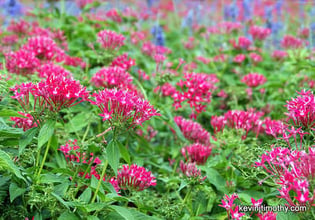 You may have heard about native plants and wondered why someone would choose them over other landscape plantings for their Florida Panhandle yards.
You may have heard about native plants and wondered why someone would choose them over other landscape plantings for their Florida Panhandle yards.
Native plants are species that grow well in the local climate and are used to the region’s temperatures, soil, rainfall amount and humidity level.
They also don’t need fertilization or protection during the colder season. In essence, native plants were created to grow here.
When replanting or adding to your garden, here are the pros and cons of landscaping with native plants in Northern Florida.
Benefits Of Landscaping With Native Plants
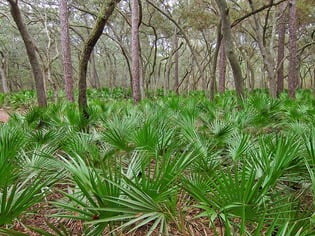 Florida ranks seventh nationwide in biodiversity, including plants, according to the University of Florida IFAS Extension. These native plants have a symbiotic relationship with local wildlife, providing wildlife with food and breeding areas as they continue to evolve together. Native plants help the Northern Florida ecology to propagate this biodiversity.
Florida ranks seventh nationwide in biodiversity, including plants, according to the University of Florida IFAS Extension. These native plants have a symbiotic relationship with local wildlife, providing wildlife with food and breeding areas as they continue to evolve together. Native plants help the Northern Florida ecology to propagate this biodiversity.
Some plants are considered non-native but naturalized. These plants aren’t from here but they’ve adapted well to the local conditions.
This category includes invasive plants, which grow so well that they sometimes choke out the native plants, affecting how animals find their food, and also potentially increasing fire risk.
Choosing native plants over invasive plants is a big step in the right direction.
Since native plants are adapted to the local growing environment, they’re easier to maintain. They are less likely to need fertilization or help adapting to the soil. They also require less water and fewer pesticide interventions.
Drawbacks Of Landscaping With Native Plants
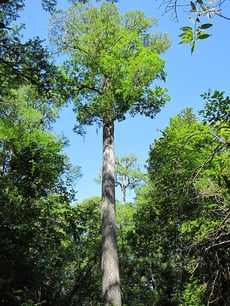 Ironically, sometimes native plants cost more and can be harder to find at the nursery. With Florida’s seven planting zones, it can be confusing as to which plants are native to Northern Florida versus those which are native and thrive in other parts of the state.
Ironically, sometimes native plants cost more and can be harder to find at the nursery. With Florida’s seven planting zones, it can be confusing as to which plants are native to Northern Florida versus those which are native and thrive in other parts of the state.
We mentioned that the plants provide food and shelter for the wildlife. One disadvantage to planting with native species is that they might sometimes look like they’ve been eaten ... because they have!
Perhaps moths and butterflies (some of the creatures we try to attract to our gardens) munch on the leaves, which don’t look as good once they finished their meal. Fortunately most grow new leaves, but it’s something you should know before planting.
It’s nice to have some predictability in your garden’s growth. Using native plants that are accustomed to the growing environment sometimes do so well they need more trimming than you might expect.
Attractive Native Plants In Northern Florida
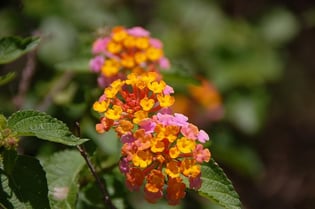 Fortunately there are a lot of attractive native plants to choose from in Northern Florida. For shrubs, consider the Japanese Beautyberry, a shrub that grows six to eight feet tall. Its purple berries are lovely to look at and provide delicious food for the birds.
Fortunately there are a lot of attractive native plants to choose from in Northern Florida. For shrubs, consider the Japanese Beautyberry, a shrub that grows six to eight feet tall. Its purple berries are lovely to look at and provide delicious food for the birds.
If you’re looking for small trees the size of shrubs, consider the saw palmetto which requires almost no maintenance once it’s established. The Bald Cypress is a large tree native to Northern Florida, which grows in dry or wet soils.
You have a big choice in native perennials with colorful flowers depending on the look you want. Think about the lantana camera, with small sprigs of red, yellow or purple blossoms. There’s a reason it’s one of the most popular plants in the South. Pentas are a butterfly favorite, with their large bunches of bright, small flowers.
Ways To Use Native Plants In Northern Florida Landscapes
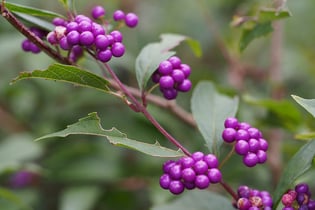 If you’re looking for a lower-maintenance landscape, consider replacing your grass with native plants instead. Not only will you cut down your lawn mowing and fertilizing, but you’ll also decrease water use.
If you’re looking for a lower-maintenance landscape, consider replacing your grass with native plants instead. Not only will you cut down your lawn mowing and fertilizing, but you’ll also decrease water use.
Some Northern Florida residents are turning to xeriscapes, using slower growing, drought-tolerant plants.
While not all native plants fit this definition, it’s something to consider if you want a big change in your yard. You can plant various zones based on their water needs and plant type.
GreenEarth Can Improve Your Landscape With Native Plantings
At GreenEarth, we’re happy to recommend native plants to use in your yard that will look beautiful and meet your goals, whether that’s lower maintenance, providing a welcome mat to butterflies, or doing your part to protect biodiversity.
If you’d like a consultation on what native plants would work well in your garden, give us a call at our Panama City Beach office at (850) 236-1959, or call our Santa Rosa Beach office at (850) 267-0010 to set up an appointment.
You can also fill out the online form on our website to schedule a consultation or download our FREE Landscape Planning Guide below and start turning your dreams of a native landscape into reality.
Images: Bald cypress, Japanese beautyberry, Lantana, Pentas, Saw palmetto
.png?width=7889&height=5988&name=GE%20LOGO%20clear%20(1).png)
